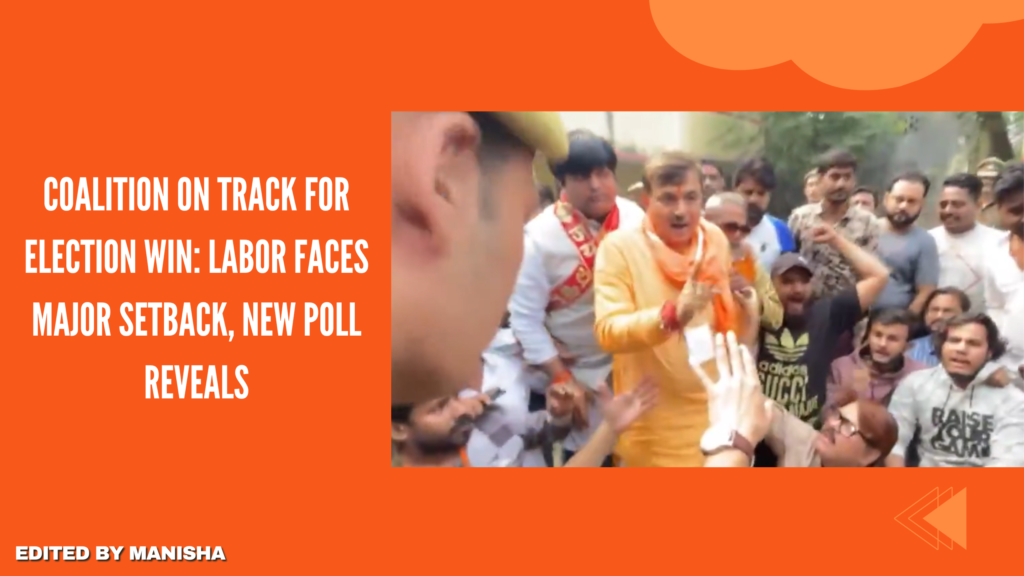
According to a new estimate from YouGov, the Coalition is in the strongest position to form a government if an election were held today. The ABC has revealed results from YouGov’s latest MRP (multi-level regression with poststratification) model, which projects the Peter Dutton-led Coalition winning around 73 seats, with a range of 65 to 80 seats. A party needs 76 seats to secure a majority, but the model indicates there’s a 78% likelihood of a hung parliament and a 19% chance of the Coalition achieving a majority.
This model is not a direct prediction of the election outcome, but instead highlights areas where the upcoming election campaign is expected to be most fiercely contested. It is based on a survey of 40,689 Australians, using MRP to account for demographic variations across all 150 electorates, estimating how many seats each party might win.
Labor is expected to hold around 66 seats, with a lower estimate of 59 and an upper estimate of 72. If this scenario plays out, Anthony Albanese may have to rely on crossbench support to retain the position of Prime Minister. Dutton has stated that if the Coalition secures more than 72 seats and surpasses Labor by several seats, it would be unusual for crossbenchers not to offer confidence and supply. Independent Allegra Spender confirmed that the number of seats would influence her decision, but she would also consider who could offer a more stable government, adding that she would work with whichever party provided a solid plan.
The median result suggests that Labor could lose 15 seats to the Coalition, including long-held seats like Werriwa, which has been in Labor’s hands for over 90 years. On the other hand, the model indicates that Labor may successfully regain inner-Brisbane seats such as Brisbane, Ryan, Griffith, and possibly Fowler, currently held by independent Dai Le.
Independent candidates are projected to hold onto their seats, though some, like in Bradfield, Wannon, and Cowper, could see challenges from the Coalition. Should independents win in these areas, it would come at the Coalition’s expense.
An MRP poll from Redbridge and Accent Research last year, based on a smaller sample, also suggested the Coalition would likely win more seats than Labor. However, there remains uncertainty in areas with strong independent or minor party candidates, as these races are more locally driven, and the candidates’ profiles can significantly impact results.
The YouGov poll estimates Labor’s primary vote at 29.1%, which, if replicated, would be the lowest since the 1930s split in the party. The combined vote for independents and minor parties is projected at just over 33%, marking a slight increase from the previous election. The Coalition is expected to win 51.1% of the two-party-preferred vote, with Labor on 48.9%, a swing of 3.2% against Labor.
The poll suggests that the swing against Labor is more pronounced in the seats it currently holds, rather than in the Coalition’s seats. Polls were conducted between January 22 and February 12, with a margin of error of +/-0.5% for the national two-party-preferred results. Estimates for individual seats carry a larger margin of error.
YouGov’s director Paul Smith notes that the election is no longer solely a referendum on the government but a choice over which party will best serve working-class Australians, particularly in outer suburbs. He points out that cost-of-living issues will likely play a significant role in the election.
New South Wales is expected to be a battleground, with the Hunter region seats of Robertson, Paterson, and Shortland, along with Macquarie, all in contention. In Melbourne, Chisholm and McEwen are particularly competitive. In Western Australia, Labor is behind in seats like Tangney and Bullwinkel, which it gained in the previous election.
While the MRP model cannot predict every seat with absolute certainty, its findings align with broader polling trends, framing the election around economic issues. Political parties are already utilizing MRP models to shape their campaign strategies. The Reserve Bank’s decision on interest rates this week and global developments could still influence the political landscape.
Ultimately, Smith believes the winner of the election will be the party that best identifies with working people’s struggles. With time left before polling day, the race remains wide open, making the upcoming campaign a crucial one for both parties. Prime Minister Albanese could call the election at any time, but it must take place by May 17.